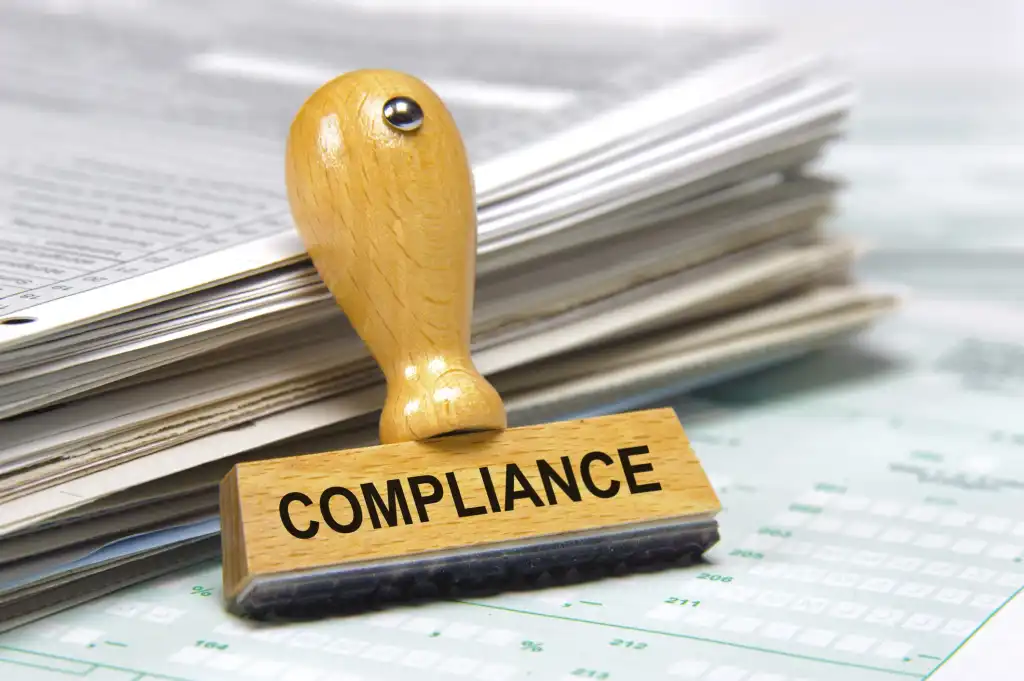Key Highlights
- Under the Corporate Transparency Act, businesses must share their ownership information with the U.S. Treasury.
- This Act prioritizes corporate transparency to boost national security and combat illegal activities and financial crimes.
- Companies must pinpoint who has substantial control over them for compliance, essentially identifying their beneficial owners.
- There’s a straightforward guide provided by the Act that outlines how companies should go about reporting this beneficial ownership information correctly.
- Meeting these reporting requirements involves collecting all necessary documents, submitting an initial report on beneficial ownership, and keeping this information up-to-date as needed.
- Not following these rules can lead to civil penalties or even criminal charges for those involved in illicit activities under the guise of corporate operations.
Introduction
The Corporate Transparency Act promotes business transparency and combats illegal activities and money-related crimes. It does this by requiring companies to share details about their ownership with the U.S. Department of the Treasury. This step helps prevent people from using fake companies or complicated ownership setups for shady purposes.
With this Act, businesses must point out their real owners, meaning those with a big say in how things are run. Sharing this information is essential because it helps protect our country and lets police forces catch individuals involved in dodgy dealings or financial wrongdoings. However, it’s also crucial for business owners to be aware of potential scams related to this Act. The Better Business Bureau has warned that scammers may exploit the new law to obtain personal information from business owners. It’s essential to be cautious and verify the legitimacy of any messages or requests for personal information.
It doesn’t matter how big your company is or what field you’re working in; following the rules set by the Corporate Transparency Act is crucial. Knowing what you need to report can save your Business from getting into legal trouble or facing hefty fines. In this blog post, we’ll dive deep into everything you need to know about sticking to these rules properly – including why it matters, key terms you should understand like beneficial ownership information and reporting requirements, preparing yourself for compliance smoothly without any hiccups along each step of the way, and exemptions for certain types of entities such as publicly traded companies, nonprofits, and significant operating companies.
Understanding the Corporate Transparency Act
The Corporate Transparency Act is a law that allows companies to tell the U.S. Department of the Treasury who owns or controls them. They must share details about people who directly or indirectly call the shots in their Business. The main goal is to clarify things and stop shady folks from using fake companies to hide what they’re doing or keep dirty money safe. Businesses must get how this works and follow these rules properly to avoid trouble and help keep our country secure.
- With ownership information being critical,
- Under the Corporate Transparency Act,
- Aiming at boosting corporate transparency,
- By requiring detailed beneficial ownership information,
- These steps target those hiding behind complex company structures.
Businesses must navigate these waters carefully, understanding their obligations under this Act. They must ensure compliance not just for legal standing but as part of broader efforts to safeguard national security against threats masked within commercial entities like shell companies.

The Purpose and Goals of the Act
The Corporate Transparency Act is all about making things more transparent and safer for everyone. At its heart, it wants to ensure the good guys know who’s behind companies. This is super important because sometimes bad people use companies to hide their shady deals, like money laundering or funding terrorism. By making companies tell who owns them, this Act helps close off ways criminals might try to stay hidden.
With this in mind, one of the big reasons for the Act is to help out a group called FinCEN—they’re the ones keeping an eye on these ownership details. The law gives FinCEN what it needs to gather this information, check it out properly, and then pass on what they find so that those looking after our safety can do their jobs better.
In short, by focusing on ownership information, precisely new beneficial ownership information, the Corporate Transparency Act aims at doing three significant things: shining a light on company owners (corporate transparency), helping keep our country safe (national security), and putting a stopper in dodgy dealings (illicit activities) through tighter control over financial movements with something called Financial Crimes Enforcement Network (FinCEN) playing a pivotal role. The Act also allows authorized entities, including federal, state, local, and tribal officials and certain foreign officials, to access beneficial ownership information for national security, intelligence, and law enforcement purposes.
Key Terms and Definitions
To get a good grip on the Corporate Transparency Act, we need to start by getting comfortable with some basic terms and what they mean. Let’s dive into them:
- Beneficial Owner: Someone who might not be listed on paper but has absolute power over or owns part of a company. They could have their hands on the steering wheel without officially being in the driver’s seat.
- Substantial Control: With this, we’re talking about having enough pull to guide what a company does or its big decisions, whether you’re out in front leading or pulling strings from behind.
- Similar Office: Think of roles like the secretary of state does, but for companies, this person deals with everything related to setting up and registering businesses.
- Shell Companies: These are empty vessels; they don’t sell anything or make stuff but can be used to hide who owns something valuable.
- Reporting Companies: Under new rules, these businesses must tell the U.S. Department of Treasury who owns them.
Understanding these bits will help any business stay on top of its game regarding following what the Corporate Transparency Act asks and keeping everything above board with ownership information and reporting requirements.

Preparing for Compliance: A Beginner’s Guide
Getting ready to follow the rules of the Corporate Transparency Act might sound tricky, but it’s easier with some help. A beginner guide can show companies what they need to know and do to stick to the reporting rules.
For starters, companies have got to get a handle on what beneficial ownership means and figure out who in their company fits that bill. They should also get familiar with how vital the secretary of state or an office like that is in America since these folks are key when it comes time for businesses to officially set themselves up or register.
What You Need to Get Started
https://www.fincen.gov/boiBusinesses must collect all the essential details and paperwork about who owns them before kicking things off with compliance. This means figuring out who has a big say in running the company and owning parts of it. On top of that, setting up a safe way to keep and sort this ownership information is critical. It’s worth mentioning that when it comes time to send in these reports, the Financial Crimes Enforcement Network (FinCEN), which falls under the U.S. Department of the Treasury, will be handling everything. So, companies should get familiar with FinCEN’s website and any instructions or forms they’ve put out there to ensure they do everything right on time. With all their ducks in a row regarding ownership info and a secure filing system for storing it, businesses can smoothly comply with the Corporate Transparency Act by quickly providing the required information and uploading relevant documents through the platform’s tools.
Identifying Beneficial Owners in Your Organization
To figure out who the real bosses are in your company, you need to collect essential papers that show who has a big say or owns a good chunk of it. It’s super important to know precisely who counts as one of these critical players because following the rules set by the Corporate Transparency Act is a must. This means identifying folks with stakes in your Business or those calling the shots behind the scenes. Ensuring you report this ownership information correctly is vital; messing up could legally land you in hot water. To keep all this sensitive info safe and meet reporting requirements, using secure ways to file everything is smart.

Step-by-Step Guide/Process
You must follow a clear set of steps to adhere to the Corporate Transparency Act. Let’s break it down simply:
- First, gather all the essential papers and details about who owns your company. This includes their full names, where they live, and how much of the company they own.
- Next, you’ll send in your first report. You’ll do this through a safe system FinCEN has set up for sharing ownership information. Ensure everything you include is on target and sent in before any deadlines sneak up on you.
- Lastly, if anything changes with who owns what part of your Business, you’ve got to tell FinCEN pretty quickly using their secure filing system.
Taking these actions step by step within given timeframes as required by law under corporate transparency guidelines ensures companies keep up with reporting requirements in the Corporate Transparency Act, effectively maintaining compliance.
Step 1: Gathering Necessary Documentation For BOI Filing
You must get all the essential papers together to follow the Corporate Transparency Act. This means finding out who owns your company by getting their names, where they live, and how much of the company they own. On top of that, you might have to look for other papers that show who owns what in your Business, like incorporation papers or agreements between shareholders. These pieces can tell you a lot about who influences your business decisions. Keeping these documents safe and well-organized is critical because you’ll need them again for reports or checks in the future. By making sure all this information and paperwork are ready to go, sticking to the rules set by the Corporate Transparency Act becomes a whole lot easier.
Step 2: Filing Your Initial Report And Getting FINCEN ID Number
After collecting all the needed details and paperwork, your next move is to submit your first report on who owns your company. This includes their full names, where they live, and how much of the company they own. For this task, you’ll use a safe way to send information that FinCEN provides. It’s critical to ensure everything that needs to be in there is included and sent off by the deadline. The first time you file gives a clear picture of who owns what in your Business. Keeping this info up-to-date is vital because it can change as new people become owners or current ones leave or change their share size. By getting this initial filing right and doing it before or by when it’s due helps meet what the Corporate Transparency Act asks for regarding sharing ownership details.
Step 3: Updating Your Business Ownership Information as Required
After you’ve sent in your first report on who owns and controls your company, it’s crucial to keep everything current by making updates when needed. Under the Corporate Transparency Act, businesses must inform the authorities about changes in who owns them or has a big say in how they’re run within certain periods. If new people come into ownership or there are shifts in who holds significant power, this info needs to be quickly shared with FinCEN. On top of that, even if nothing changes, companies should still check in once a year with their latest details. Staying on top of your beneficial ownership information in the United States helps you stick to the rules laid out by the Corporate Transparency Act. It keeps you away from any fines or legal trouble. It is important to note that this 90-calendar day deadline runs from when the company receives actual notice that its creation or registration is effective or after a secretary of state or similar office first provides public notice of its creation or registration, whichever is earlier. Companies must also be aware of any public notices of its creation or registration and update their information accordingly.

BOI Reporting Requirements and Deadlines
Under the Corporate Transparency Act, companies must report certain details annually within a given period. If they don’t, they could face serious legal trouble. These businesses need to know when the Financial Crimes Enforcement Network says these reports are due so they can avoid any problems. In some cases, like when there’s a change in who owns the company, they need to inform authorities immediately. By sticking to these deadlines and submitting the original report on time, companies help keep things open and honest, which protects them from getting into legal hot water. Getting a good grip on what needs to be reported, including any corrections or omissions, within 90 days of receiving notice of the company’s creation or registration is vital for any organization wanting to stay on the right side of the law.
Annual BOI Report Filing Obligations For The Corporate Transparency Act
In addition to the first report, companies must continue sending updates every time there is a material change about who owns or controls the company. Besides this, there is no Annual BOI Reporting requirement per se. The main reason for this update filing is to ensure all the information with FinCEN stays correct and current.
Special Situations Requiring Immediate Reporting
Besides the usual need to report, there are times when companies have to quickly let authorities know about certain changes under the Corporate Transparency Act. This includes any shifts in who owns or controls a company that doesn’t happen during the standard reporting period but through another form of substantial control, as explained in FinCEN’s Small Entity Compliance Guide. For instance, if a company goes through something big like being sold, merging with another company, or getting bought by someone else, and this leads to different people having control or ownership stakes. These details must be shared with FinCEN without delay. Companies must keep an eye on these special rules and ensure they’re telling FinCEN about any critical changes immediately. By doing so diligently, businesses can stick to what the Corporate Transparency Act requires and steer clear of any fines or legal trouble.
Common Myths and Questions
Navigating through the complexities of the Corporate Transparency Act may lead to misconceptions. One common myth is that only large operating companies must comply, but in reality, all reporting companies must adhere to the Act, regardless of size. Understanding these myths can ensure smooth compliance with the Act.
Navigating Multi-Layered Ownership Structures
: Understanding the intricacies of multi-layered ownership structures is crucial for compliance with the Corporate Transparency Act. Identifying beneficial owners across complex ownership layers requires diligence. Companies must trace substantial control through various entities to ensure accurate reporting. Properly documenting ownership chains and understanding the relationships between entities is essential. Comprehensive tools and resources can streamline this process, aiding compliance with the Act’s requirements. Familiarizing yourself with these structures ensures transparency and compliance within intricate ownership frameworks.
Addressing Changes in Ownership or Control
When changes occur in the ownership or control of your organization, it is crucial to update the Beneficial Ownership Information (BOI) promptly. Whether there are shifts in beneficial owners or substantial control, accurate and timely reporting to relevant authorities such as the Secretary of State is essential. Failure to do so can lead to severe consequences, including criminal penalties. By ensuring that your company’s BOI is always up-to-date, you stay compliant with the Corporate Transparency Act and maintain transparency in your corporate structure.
BOI Reporting for Rental LLCs
The Corporate Transparency Act states that Rental LLCs must disclose their beneficial ownership information (BOI). This requirement applies to entities engaged in rental activities, necessitating the identification of individuals with substantial control. Filing the initial BOI report is crucial, including details on owners with at least 25% ownership. Compliance ensures transparency, aiding law enforcement in combating financial crimes. Registering accurate BOI details helps prevent LLC misuse for illicit activities, aligning with the Act’s goal of enhancing corporate transparency and accountability.
BOI Reporting for a subsidiary of an exempt organization
BOI reporting for a subsidiary of an exempt organization involves disclosing beneficial ownership information as required by the Corporate Transparency Act. Even if the parent organization is exempt, the subsidiary must provide accurate details about its beneficial owners. This ensures transparency and compliance with regulatory standards set forth by the Department of the Treasury and other relevant authorities. Proper documentation and adherence to reporting guidelines are crucial for subsidiaries to fulfill their legal obligations under the Act.
BOI Reporting for any Sole Proprietorship reported on SCH C or Rental Property reported on SCH E
Accurate reporting is crucial for entities where beneficial ownership information (BOI) aligns with what is reported on Schedule C or Schedule E forms to comply with the Corporate Transparency Act. Ensuring that the information reflecting ownership or control in these tax forms is consistent with the BOI report is essential. Any discrepancies could lead to penalties or legal implications. It is imperative to cross-verify the data provided in these tax schedules with the required BOI details to maintain compliance seamlessly.
BOI Reporting for an inactive corporation
For an inactive corporation, complying with the Corporate Transparency Act involves submitting BOI reports even if the Business is not operational. Or, if you have decided to close the Business, you need to work with the State Franchise Board and dissolve the Business. Once the Business is dissolved, you need to ensure that the Business is ‘killed’ by the IRS. You can contact an expert to help you with this dissolution, as it needs to be done correctly. If the dissolution still needs to be done, the BOI report should be filed and contain the required information about beneficial owners, even if there have been no recent changes. It’s essential to keep the records updated with the Secretary of State to avoid penalties. Despite the inactive status, failing to meet reporting deadlines can lead to consequences under the Act.
Conclusion
Following the rules of The Corporate Transparency Act is vital for businesses to stay on the right side of the law. It’s all about getting what it means, knowing the essential terms, and keeping up with what you have to report. Sticking to these rules will be pretty easy if you take it step by step and tackle any problems head-on. For those tricky bits like figuring out who owns what in your business structure and ensuring everything’s up-to-date, For My Tax is here to help. Keeping track of reports and staying ahead with updates will save you from trouble later on. So, if making sure your Business ticks all the boxes for The Corporate Transparency Act sounds daunting, reach out today; we’re ready to lend a hand.
How can For My Tax Team help you?
For My Tax is your go-to ally for dealing with the tricky parts of the Corporate Transparency Act. They know all about what needs to be done regarding compliance and reporting, making sure you’re on top of everything that the Financial Crimes Enforcement Network (FinCEN) asks for. With their help, using a secure system to file things, businesses can get their beneficial ownership information right and on time. Working with For My Tax means you’re doing your part in keeping up with corporate transparency requirements while also helping fight financial crimes, which is pretty essential for national security.







